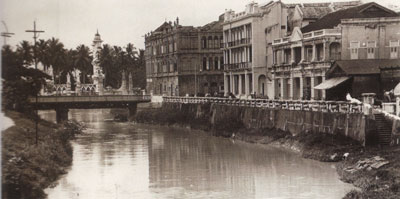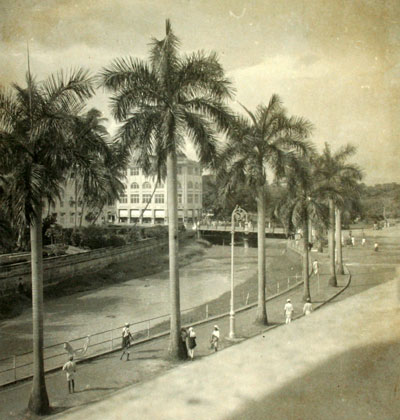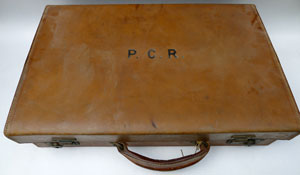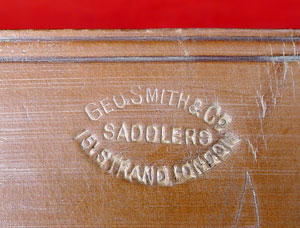
For the descendents of Richard Dearie and his son John Russell
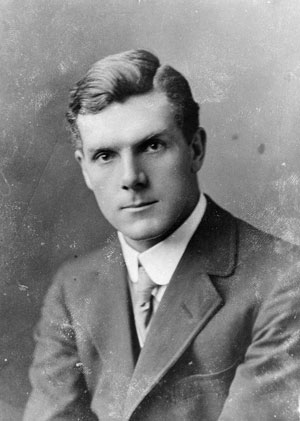
Philip Charles Russell
Born: 24 July 1884
Died: 22 December 1921, aged 37
Architect and Civil Engineer.
Compiled by Claire Grey
New Malden
Philip Russell was born on 24 July 1884 at South View Villas, Elm Road, New Malden, Kingston on Thames. He was the third son of John Russell and Frances Webster and was the one supposed to look most like his mother.
In 1890, when he was 5, the Russell family moved to Kuala Lumpur.
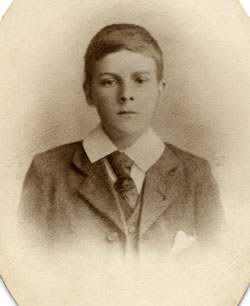
Kuala Lumpur. In Kuala Lumpur Phil and his brothers were sent to a small private school run by Mrs. Hurth, the wife of a leading coffee planter.
In 1893 when he was 9, his mother Frances died in an accident in Singapore. In the same year he was sent to England with Archie, Don and Bob to live with his mother’s sister and her husband: Nell and Uncle George Oxer in Peckham.
Peckham. In Peckham they lived with their aunt and uncle and two cousins at 135, Chadwick Road. From letters from his father we know that Phil was good at drawing and liked collecting stamps. Agnes Rough, interviewed in 1985 thought he probably went to school in the Dulwich area, possibly Alleyns School, although the archivist there has no record of him or Archie.(1)
Kathleen Russell reported that Aunt Nell and her husband George used the money that Jack sent from KL on their own two children and neglected the Russell boys. Archie's sight was poor and he could never see the black board. Later the Russell family came to believe that both Phil and Archie picked up TB in Peckham because they were not fed adequately.
It may be the neglect that accounted for none of the boys keeping in touch with the Oxers in later life, although Aunt Nell was invited to George's wedding.
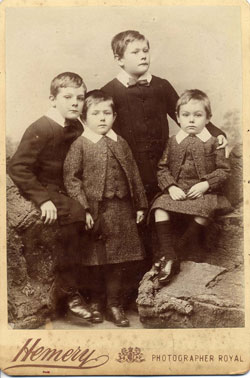
On 7 November 1899, Phil now 15, was employed at $15 a month by Selangor Government railway as an apprenticed engineer. See the recommendation by G. W. Frye the resident engineer, left.
Phil began working on the railway extension to Tanjong Malim and later transferred to Seremban end of new line from Kajang to Serembam where he worked under Mr Paxton. Until the line was built he had to travel by sea to Port Dickson to get to Serembam.
From Archie’s diary; June 1st Thursday 1899 “Phil started as apprentice for Civil Engineer to SGR for 3 years.
July 4 Tuesday “Phil went into hospital with Typhoid fever.”
Aug. 19th Sat “Phil returned from hospital cured.
Aug. 24th “Phil went to Mr Mickles at Kuala Selangor by the 9.50 train to recover his health”
Sept 18th “Phil returned from K. Selangor in morning.
1900 October 9th “Phil returning from Kuala Kubu where he has been staying with Mr Paxon and working on the line for over a month. He says he has had a very pleasant time making the acquaintance of Mr Jelf (a cadet) among others. Mr Paxon goes on to Seremban where he is going to take over the Serembam extension from Mr Hubbock who has made a mess of things and Phil is to follow him next week with the furniture etc. Mr Fryer having agreed to change Phil from the Tanjong Malim extension now finished to the Seremban end of the new line to be made from Kajang to Seremban when Phil will live with and be under Mr Paxon.”
Oct 14th Sunday Phil leaves for the early train to Seremban (via Port Dickson) Mr Fox and Mr Frye go with him.
Nov. 30th “ Phil is made Mason ?say inspector Seremban extension and draws a salary of $45.00 which with his salary as apprentice comes to $60. He is put in charge of the SGR railway station at Seremban.”
Dec 23 Sunday Phil came up in the morning from Serembam for Christmas.”
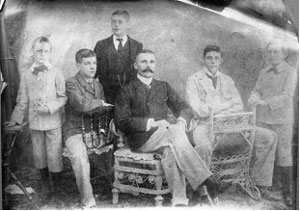
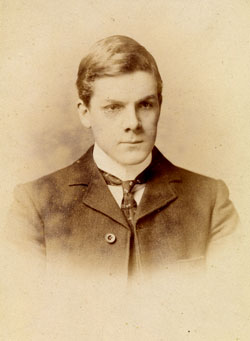
"To the Secretary to Government, Selangor, 23 January 1901. I have the honour to state for the information of Government that Mr. P . Russell, the son of Mr J Russell the government printer is an indentured apprentice in this Department and is stationed at Seremban. On his transfer from here to Seremban the sub divisional officer in charge there submitted his bill for traveling expenses and his charge of 1st class fare by steamer was disallowed by the State Auditor and deck passage fare substituted.
2. I have the honour to request that the Government will be good enough to sanction the payment to him of 1st class fare, as it would hardly be fair to make him travel as a deck passenger. I have the honour to be Sir, Your obedient servant, H. Graves, Resident Engineer for RER."
Malta 1904-1906 He was then offered a job by Pearson constructing either the Hudson tunnel or the breakwater in Malta and he chose the latter. Pearson’s tender on 8 October 1902 was for the construction of the breakwaters and viaduct at Ricasoli Point and St Elmo Point. Construction began in 1904. (2) Nothing is known about Philip's work in Malta which lasted 2 years.
In 1906 he visited his brother Don in America, who studied at the School of Mines in Colorado between 1905 and 1909.
The Station and Hotel
After working for Loke Yew Phil set up on his own. On 5 August 1909, with his brother Archie, he tendered for works to build the Station and Hotel at Kuala Lumpur. The contract was for 27 months. In 1909 and 1910 aged 26 he worked on the building.
Right: His post card sent to Emily Rough in New Malden which was found in her album. The photo is dated 1 May 1910. Phil wrote on the front: "D. E. Behold me and the contract Arch & I have in hand. This only shows the main front. Yours Phil."
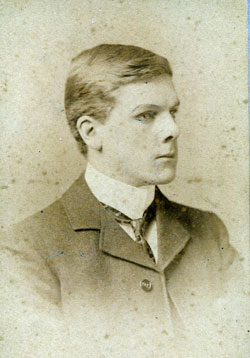
The Shabeen
In 1909 his father Jack moved into a house overlooking the racecourse.
They called it the “The Shabeen “ In September of that year his brother George married Madeleine Mossop.
Wives were not expected to go to the Shabeen without announcing themselves.
The boys used it for drinking and kept women there.
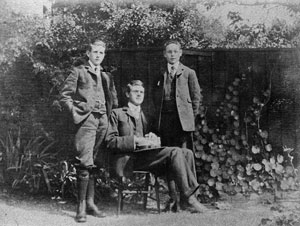
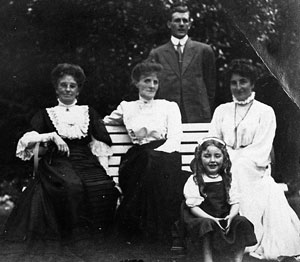
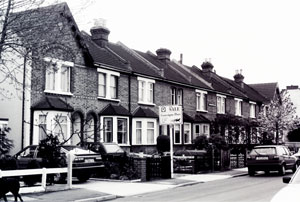
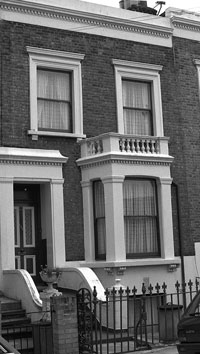
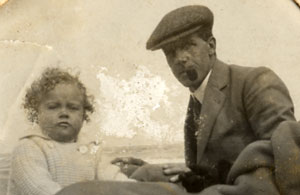
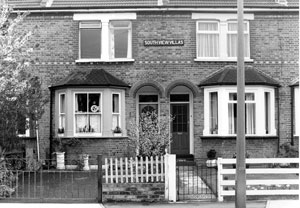
London 1902
According to Don Russell, it was after Phil had worked on the Seremban line that he returned to the UK to work for Sir Weetman Pearson(2), contractor for the new Great Northern and City tube line, that ran from Finsbury Park to Moorgate. Construction began in 1899 and was completed by February 1904. The Selangor News of 31 October 1902 announced Phil's appointment to the project. The two photographs of him taken in an Islington studio, above, show retouching to hide damage below his right eye. It may have been at this time that he went to the Poly. in London. It is not known which institution this was.
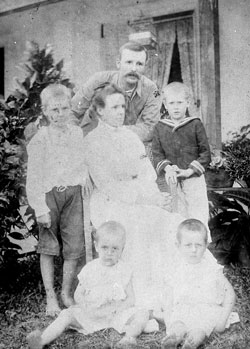
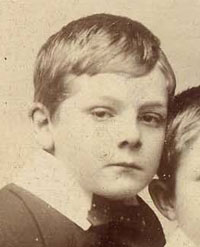
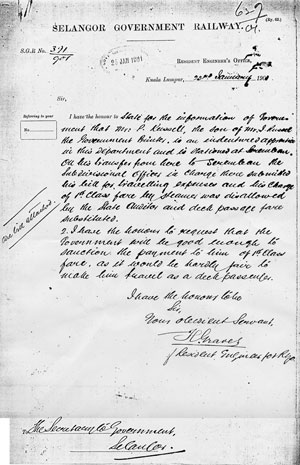
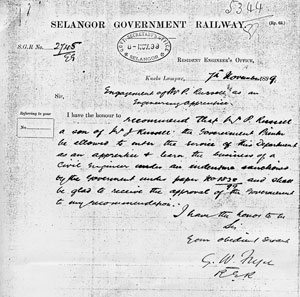
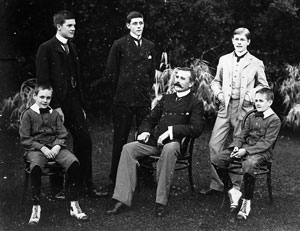
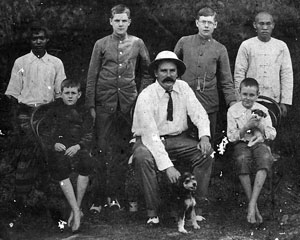
Malaysia
In 1899 his father came to England and took the boys back to Malaya. His brother Archie kept a diary with details of the voyage and events the following year.
Monday April 10th 1899: ” I read and do a little Malay. I am teaching Phil.”
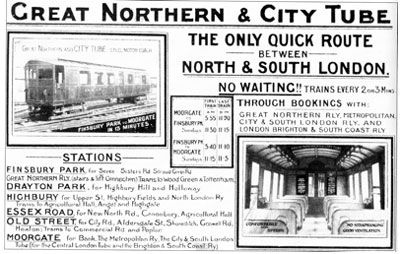
September 1910 land records show Phil. applied for 4 acres of land in Ulu Yam. He already owned the adjacent 60 acres on which he had begun to cultivate rubber. Another land record of February 1912, shows him requesting to change the use of land in Setapak from agricultural to brick making. He was working with a partner called Low Bek. In June 1912 he took on an assistant called Aitkin-Berry. In December 1912 he attended the funeral of Mrs. Loke Yew.
In May 1913 on behalf of Swan and MacLaren he officially handed over the new Mercantile Bank in Market Square. In January 1914 he took Aiktin-Berry into partnership and in the same year returned to England to be married to Hilda Mossop.
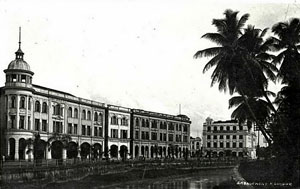
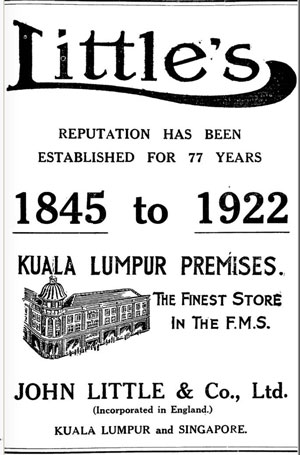
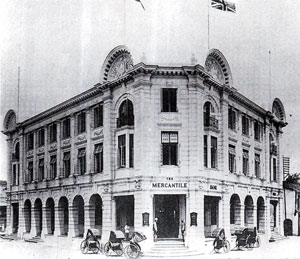
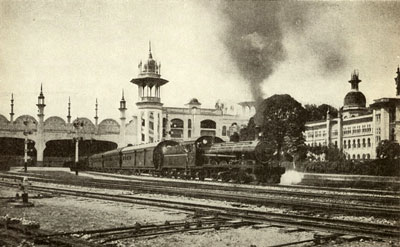
Working for Loke Yew On 19 July 1906 the newspapers reported that he was on his way from Malta and coming to K.L. to take up private work.
On 7 November he was occupying offices adjoining the Malayan Supply Company.
By 1907, aged 23, he was working as a civil engineer for Loke Yew, the millionaire businessman. The papers of 16 May 1907 report that he and Loke Yew have just returned from China.
He was in charge of all of Loke Yew's building operations. Phil was a shy man and found work which involved interaction with a lot of other people difficult. The Malay Mail reported the trip he made with Loke Yew. On 29 May 1907, they left K. L. for Singapore. On 2 August they arrived at the Hotel Cecil in London. On 14 Sept they arrived in Scotland, on the Firth of Forth to watch the trial of new steamer. By 27 September they were in Dublin, on the 21 November on a trip down the Rhine. On 16 December they left England for America. 21 February 1908 " Mr Loke Yew and Mr. Russell returned to Kuala Lumpur on Thursday from their eight months’ trip which has taken them round the world." The party included Mr. David Robertson and Mr. Chow Thye according to the Eastern Daily Mail and Straits Advertiser of 16 December.
Phil built workmen’s cottages, which were admired, (see below) and gained a few commissions. He also designed buildings for Loke Yew.
The Mercantile Bank of India in Market Square, on the corner of Market Street and Roger Street.
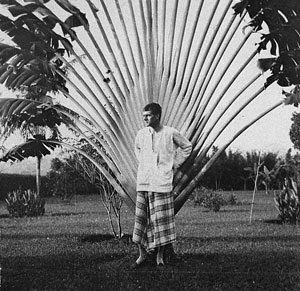
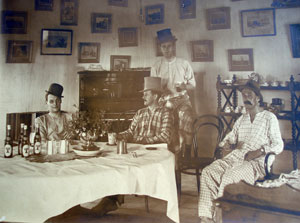
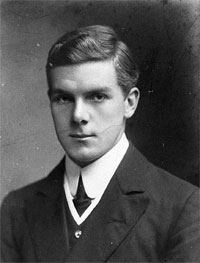
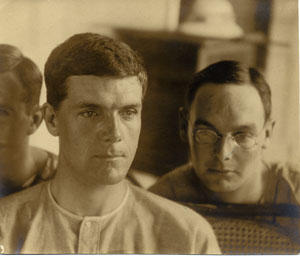
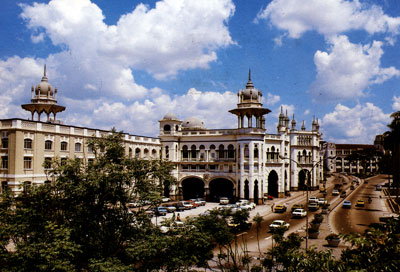
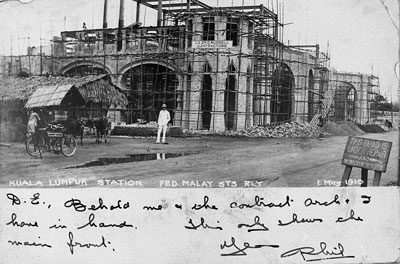
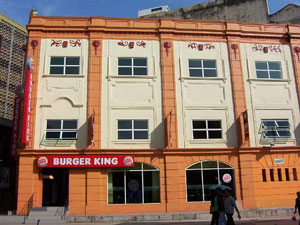
The building was designed by Hubback and the supervision of the construction was by his chief draftsman W. S. Huxley. "When the tenders came back the lowest was $40.000 over the budget.... The additional money was approved but the contractor Mr Nicholas declined the contract which meant a second tender operation for the superstructure whilst the sub structure works were almost complete. The second set of tenders were received on 5th August and JA and PC Russell were appointed to carry out the work for the sum of $241,300. Several changes were made during the contract, most notably the laying of the booking hall floor in dressed chengal blocks rather than the rough wood blocks with jointed tar that was used for the platforms. The first traffic passed through the station six weeks early on 1 August 1910."(3 )More details about the tenders can be read here.
Right: The station in 1937.
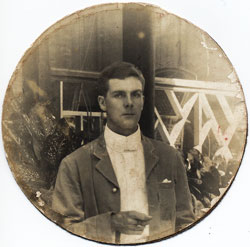
Above: Phil with John Russell, George and Madeleine's son, at the seaside in Whitley Bay Northumberland in 1912. The experience of looking after John is referred to in his proposal, right.
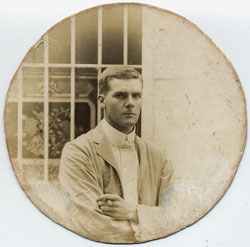
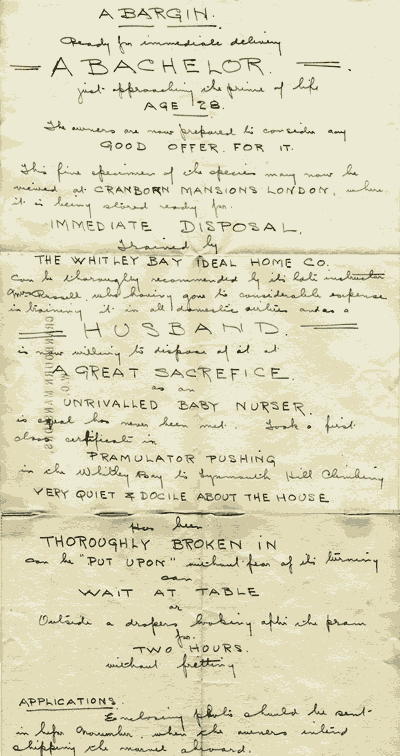
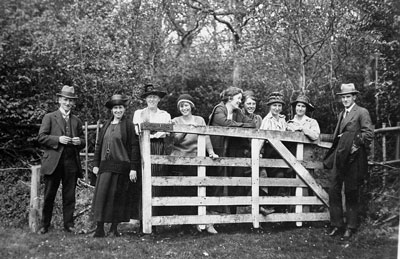
Right: Phil on right with Hilda third from right and Robert Fox, left and his wife Nell , ( second from right) at Oxershotts.
Phil and Hilda were married 2 years later on 14 November 1914 at St. Johns Westminster.
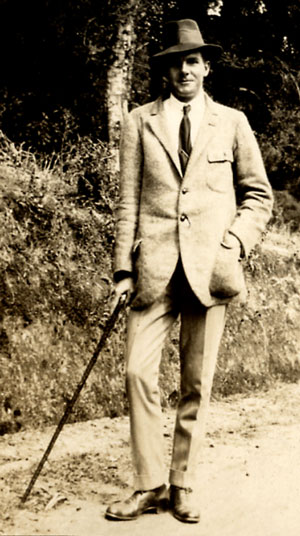
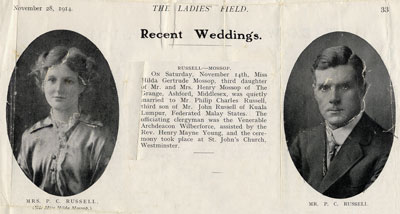
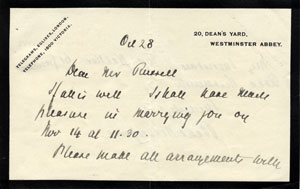

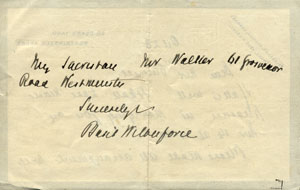

War had been declared on 4 August 1914. They were married 3 months later, by Basil Wilberforce, grandson of the famous anti slavery Wilberforce. See his reply to Phillip right. "Dear Mr Russell, If all is well I shall have much pleasure in marrying you on Nov 14 at 11.30. Please make arrangements with my secretary Mr Walker, 61 Grosvenor Road Westminster, Sincerely Basil Wilberforce." (4)
Presumably the celebrations had had to be brought forward and were low key due to the war. There appear to be no wedding photographs.
Notes
(1) Alleyns School Archives were contacted in 2005. Their archivist Peter Rodway could find no trace of either Philip Charles or John Archibald Russell between 1893 and 1899 although the records cover this period.
(2) Pearson founded the publishing company that still bears his name but was originally involved in engineering. For more information click here. His tender for the breakwater in Malta is in the National Archives in Kew.(ADM 121/88)
(3) From Kuala Lumpur Railway Station. An appraisal by Peter Stocker. Published in Majallah Arkitek Issue 3&4 1986 More detailed photographs of the station here.
(4) Albert Basil Orme Wilberforce (1841–1916) was appointed canon residentiary of Westminster in 1894, chaplain of the House of Commons in 1896 and Archdeacon of Westminster in 1900; he published several volumes of sermons. He was son of Samuel Wilberforce. Read his life here.
(5) Swan and Maclaren was the oldest architectural firm in Singapore. It started in 1887. Read about its history here, and here. Most of its work now takes place in China.
(6) Thanks to Parrot Marrot for identifying the location of the Boustead Building in K. L. in September 2010.
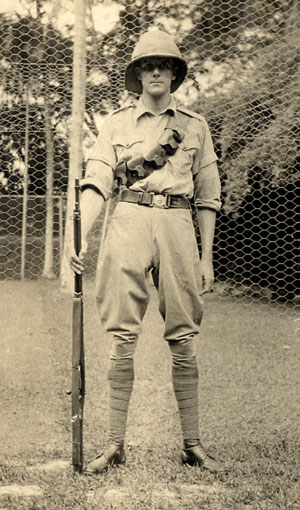
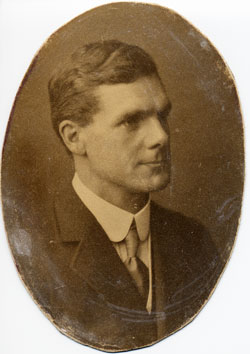
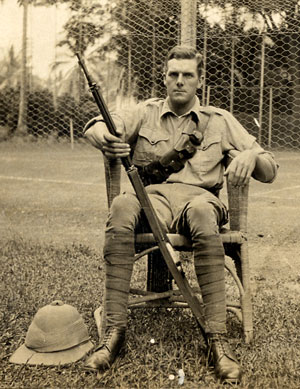

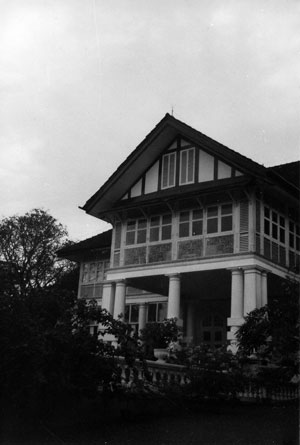
Buildings in Kuala Lumpur. The Malay Mail 3 January 1914, says " Mr. P. C. Russell, the architect responsible for so many of the new buildings erected in Kuala Lumpur in recent years". Philip designed the Hong Kong Bank building at Market Square. See below right . It opened in 1914. The upper floors were let to J. A. Russell and Co. The contractors were Archie and Donald. Phil also designed the bank manager’s house. See below left.
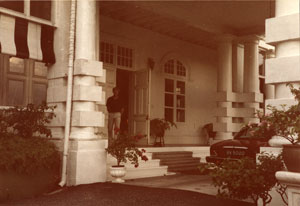


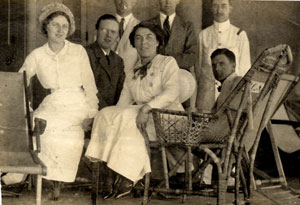
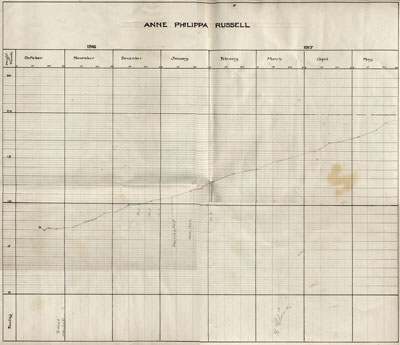
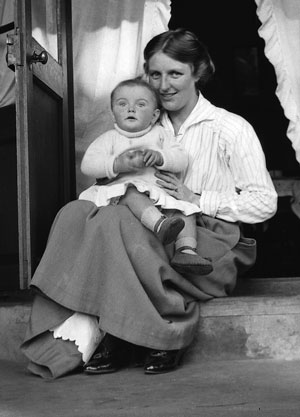
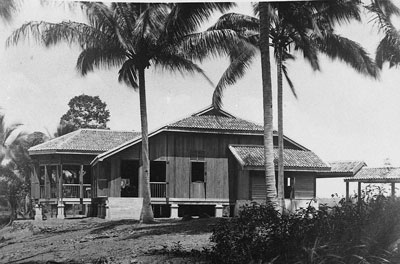
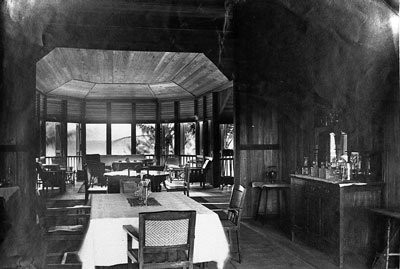
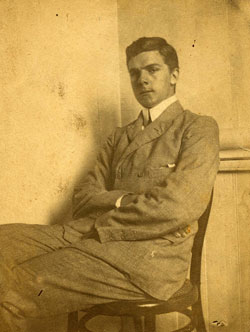
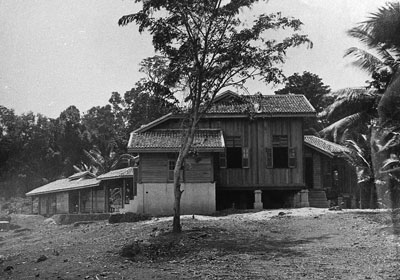
in May 1921 Phil had an operation for appendicitis . Hilda was told that the drainage tubes being put in wrongly had wrecked his health. He had been supposed to recuperate in Switzerland.
He, Hilda and Anne went to Australia in late August for a better climate. As soon as he had been diagnosed the other Russells told Hilda that her duty lay with her husband. She was doubtful about leaving Pru and Bobby behind. She took Anne with her, so Pru and Bobby were sent home to the UK and went to live with Madeleine and George.
Phil had to swallow a drug several times a day and used to go down to the bottom of the garden to take it because it made him scream with the pain. He sent Hilda out of the room when he tried to eat.
When he was dying Atken–Berry was persuaded to buy his partnership in Swan & Maclaren and the proceeds of that were what the family lived on.
Ann was not allowed to be in his presence and had to talk to him through a closed window. No one spoke to her for four months.
On December 22nd 1921 he died aged 37 of tuberculosis of the throat.
He was buried at the Church of England cemetery in Wentworth Falls, New South Wales. When Hilda returned to the UK with Anne she was met by her sister Freda who said they looked like refugees.
Hilda was left to bring up 3 children alone: Anne aged 5, Prudence aged 2 and Robert, 5 months.
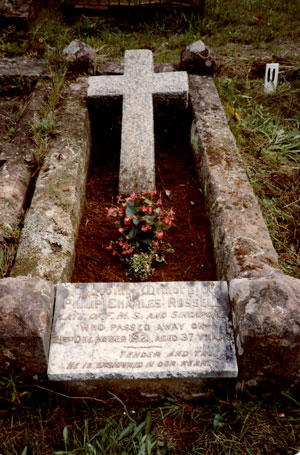
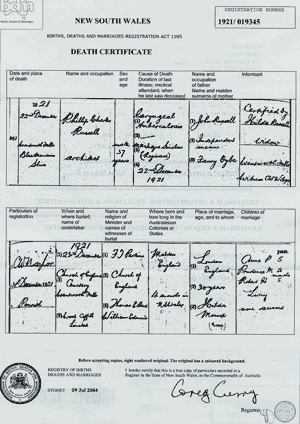
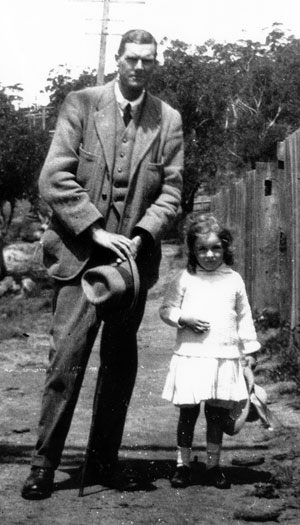
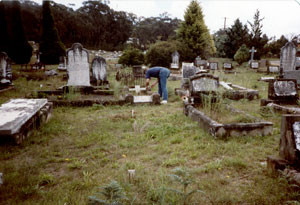
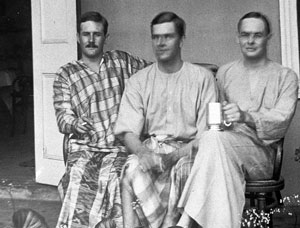
Above: Phil photographed by his brother Don. His achievements and enterprise were impressive for someone so young. Perhaps childhood poverty had driven him to succeed? In the 1930s Phillip's son Robert was "somewhat miffed" to hear that Atken- Berry who had bought out Philip's partnership in Swan and Maclaren had boasted that he was now the richest man in Singapore.
Like many families in this family history their future was radically changed by the death of the breadwinner at a young age.
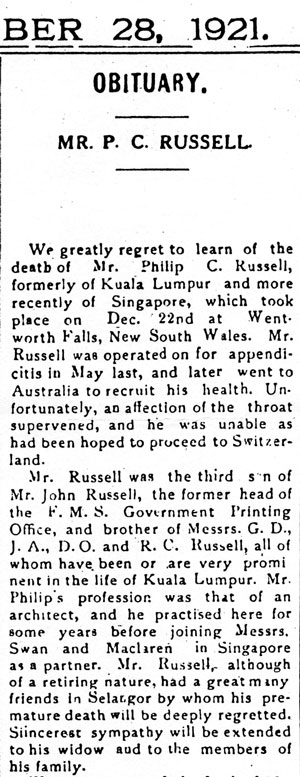
Right: Phillip's obituary from the Malay Mail 28 December 1921, notes his retiring nature.
Hilda described him as shy.
Truda interviewed in 1985 recalled her father Robert Fox saying Philip was sometimes irritable and a bit snappy, and that he had been ill in his youth.
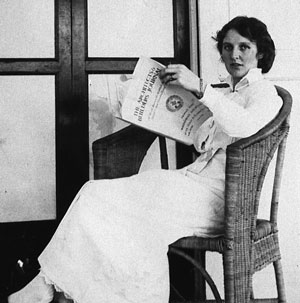
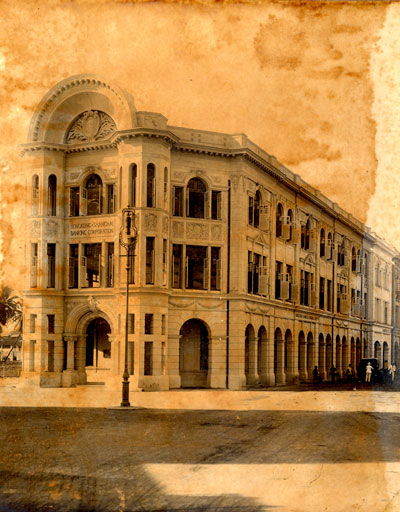
Left: Another silver case with Phil's initials.
Photo by Bob Russell.
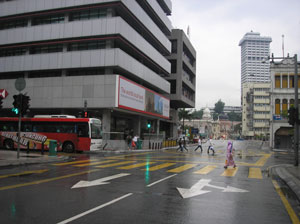
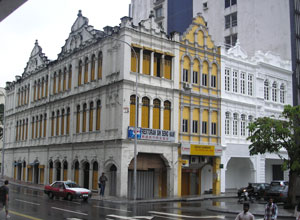
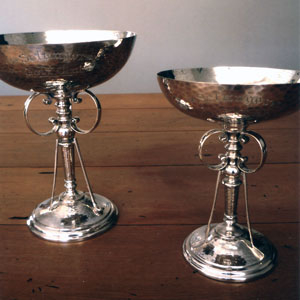
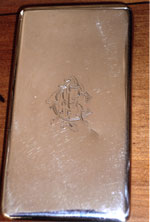
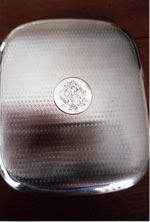
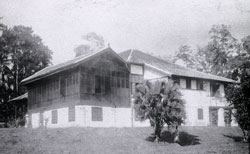
View Buildings associated with Phil in K.L. in a larger map
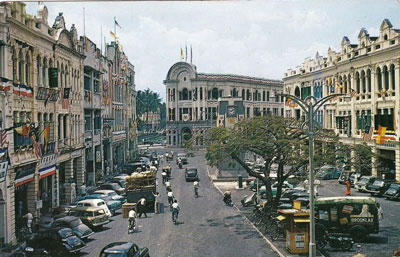
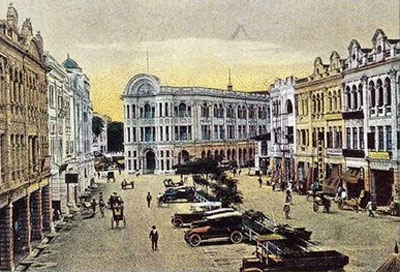
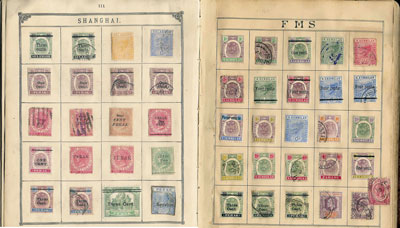
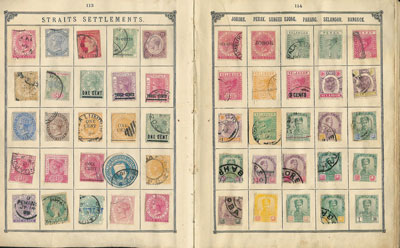
A few pages from Philip Russell's stamp album: "The Lincoln Stamp Album and Catalogue with Illustrations and Maps (9th edition)." There was room for over 5,000 stamps but there are lots of spaces.
With thanks to Julia Spence.
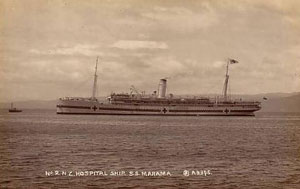
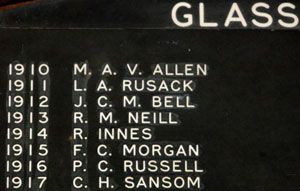
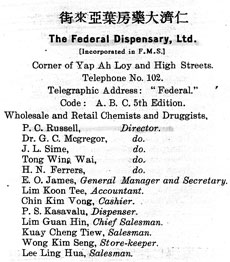

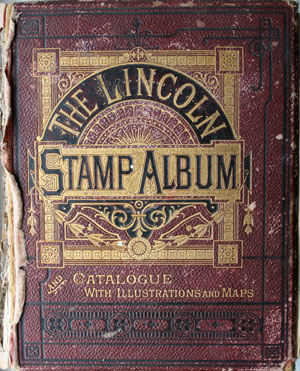
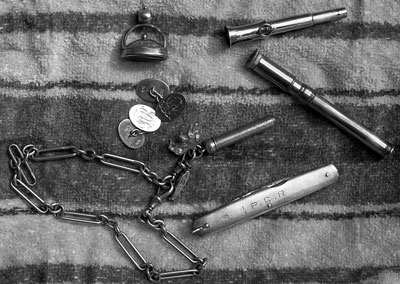
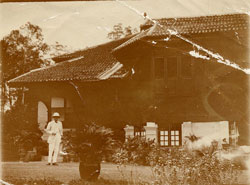
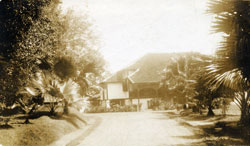
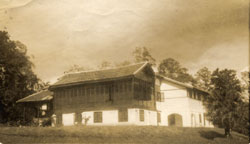
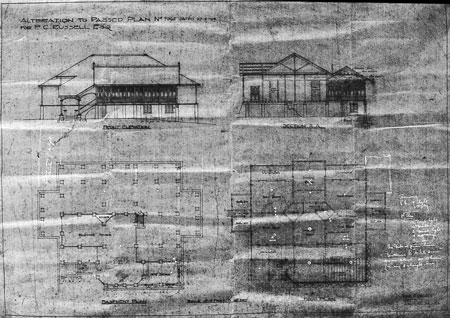
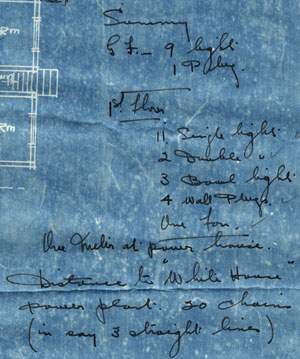
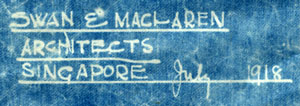
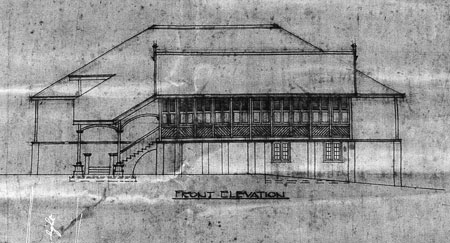
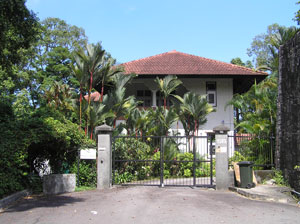
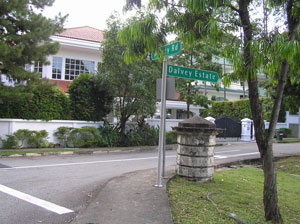
Dalvey Road today is still a residential area of black and white bungalows.
Photographs taken by Sally Williams in 2010.
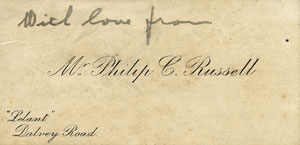
Singapore & Straits Directory 1909
Russell, Phillip. C Architect and Civil Engineer, Loke Yew
Buildings Agent for Swan & Maclaren, Singapore
Above: Its sad remains which have now been demolished. Photo Julian Davison
